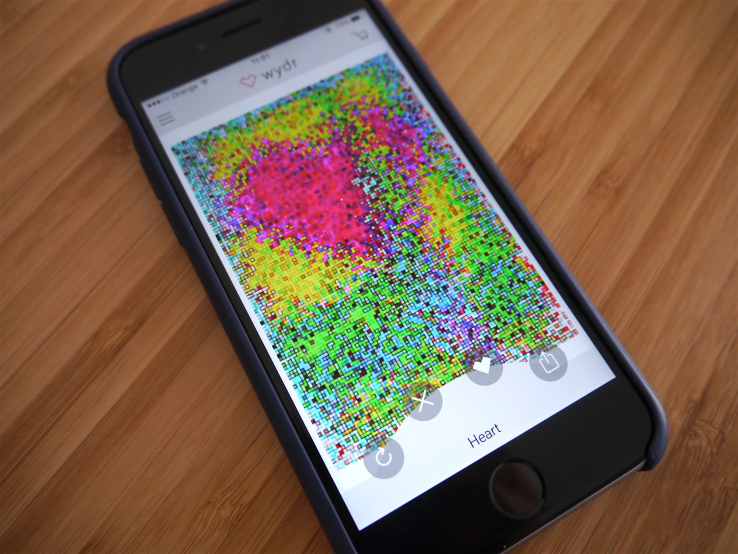

Who needs galleries when you can just flip through a stack of artworks on your phone, swiping right when you like what you see and left when you don’t? The yes/no sifting mechanism popularized by dating app Tinder continues to oil the wheels of many a fledgling startup — such as bootstrapping Swiss based art buying app wydr.
“Our user is a typical Gen X/Y who wants to decide for himself what to like!” says co-founder Matthias Dörner. “Wydr changes how people interact with art. No curator, as all artworks are community curated. Artists get feedback on what users like, and users see what’s hot.”
His elevator pitch for the app is the pithy: “Art Galleries are for the 1%, wydr for the 99%.”
In app curation is also, inexorably, powered by the swipe to like mechanism — factoring in likes and dislikes across wydr’s community of users, as well as considering each individual user’s preferences. The app adds a community rating for paintings too, with each artwork displaying a rating of between one to five hearts based on its crowdsourced popularity. You can practically picture gallery curators weeping into their designer spectacles at the prospect…
Wydr only launched in January so it’s still early days but the bootstrapping startup is taking revenue already — Dörner says active users are “in the five digits” at this stage. He claims 40 per cent of first time buyers come back to buy again, and repeat buyers spend an average of 70 per cent on the second purchase. The average shopping cart value is $430.
The vast majority of artworks available for sale on the app are original pieces, rather than prints. Dörner says more than 100 new works are added each week. Shipping is typically done by the artist but wydr is subsidizing costs — offering free global shipping to grease the funnel for artwork impulse purchases. It takes a 30 per cent commission on all artworks sold via the app, handling payment via Stripe and PayPal.
But is an app really an appropriate place to buy large works of art? Color fidelity and a sense of scale are obviously hard to judge from a small digital representation. And the price-tag on artworks is rather higher than the average impulse purchase…
“Our customers like to be original, without spending a fortune at an art gallery, and without buying one of the many generic posters at a furniture shop,” says Dörner in response to this question. “Wydr isn’t for the art collector, but for the casual art lover. We see purchases of up to $500 always happening on the wydr app, over $500 rather on www.wydr.co where users can see the artwork on a larger screen.”
He adds that the return rate so far is below three per cent.
Wydr has around 400 artists signed up at this point, hoping their artworks get swiped into users’ shopping carts. Dörner says wydr runs Facebook and Instagram ads to recruit more artists to the platform, as well as relying on referrals, touting the wider audience the app can bring artists via its global presence in the iOS and Google Play app stores.
“Just last week an artist sold a 100 x 80cm large painting from Switzerland to the US — connected on wydr.”
So galleries watch out — looks like the millennials are coming for your spoils too.

